Learn - Apr. 28, 2025
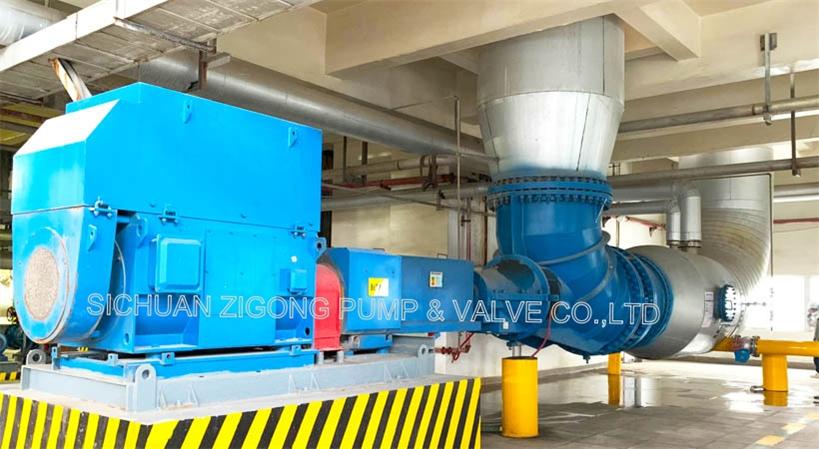
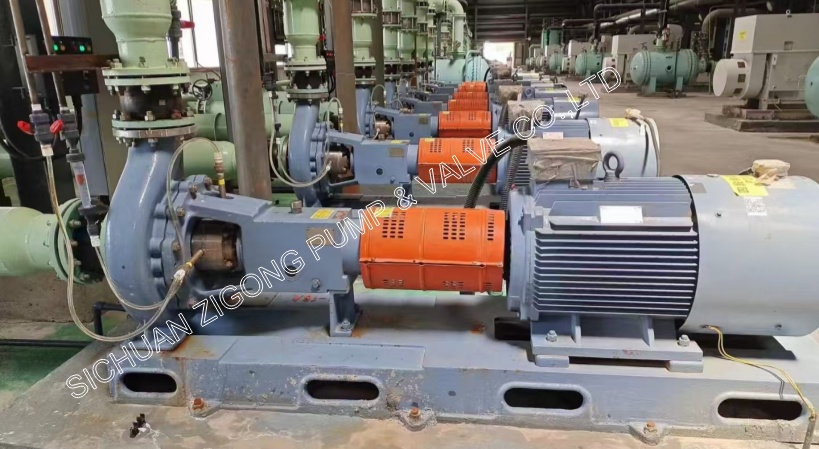
Pumps are the essential fluid conveying equipment in various sections including industrial applications, building construction, agricultural irrigation and civil infrastructure. While among the family of pumps, the axial flow pumps and centrifugal pumps are relatively common ones that have their own distinct features. They have completely different working principles, application fields and advantages and disadvantages, therefore, to ensure the optimized performance during the pump operation, it is important to take a lot of parameters and factors into consideration during the pump model selection.
Firstly, the pumping fluid flows through the pump suction to arrive at the pump elbow, and then the fluid begins to engage with the blades of impeller itself which axes the fluid. The diameter of the impeller, the rotation direction of the impeller and the angle of the blades, etc., determine the pump flow rate, flow direction and pressure of the fluid. The kinetic energy of the fluid produced by the rotation of the blades will be transformed into pressure energy, so that the fluid pressure can be increased with the rotation speed of the blades. Under such a condition, it provides that so long as the fluid has reached the desired point of pressure then the fluid will be pumped out via the impeller discharge of an axial flow pump.
In summary, an axial flow pump achieves the purpose of conveying of medium by accelerating it from the pump suction to the pump discharge through the rotation of its blades. Due to this working principle, the axial flow pumps are the most ideal pumping solution for needs of large flow rates and low outlet pressures.
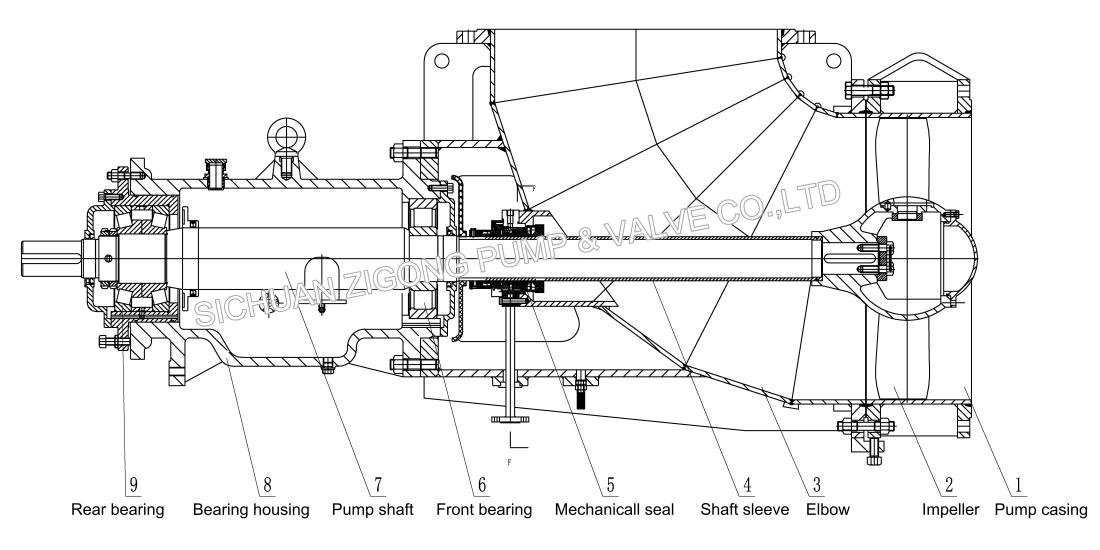
An axial flow pump mainly consists of a pump casing(also known as pump elbow), an impeller, a main shaft and a mechanical seal. And the impeller is installed at the suction of the pump, the pump elbow the casing of the axial flow pump, inside which the above mentioned components are installed. With the function of all the components inside the pump elbow, the pump casing can guide the flow of the fluid and increase the pressure.
Pump suction and discharge: The suction and discharge direction can be customized, they can be interchangeable as per client’s requirement. In most cases, the suction is at the end of the pump, while the discharge is on the top of the pump.
Impeller: It is a fundamental component of axial flow pumps, which includes several blades on the impeller hub at an angle design. When the pump shaft starts to rotate, the interaction between the blades and the fluid drives the fluid to move along the axial direction.
Shaft bearings: The pump shaft is a core rotational component where the impeller and the mechanical seal are installed onto, the strength as well as the diameter of the shaft must be carefully calculated. Bearings are group of part which is used to fix the rotation of impeller and mechanical seal and also reduce the friction of the rotation, different size of pumps require quite different structure bearings.
Shaft sealing: The axial flow pumps require shaft sealing at juncture of the pump elbow and the shaft to prevent the pump from leakage. There are two types of shaft sealing, mechanical seal and packing seal, but nowadays packing seal is no longer conform to the environment protection requirements, while the mechanical seal becomes widely accepted due to its reliability of sealing performance, especially for chemical solutions.
Bearing housing and base plate: The bearing housing is where the pump bearings and shaft are installed onto, it is also connected to the pump casing(also known as the pump elbow). While the base plate is where all the pump parts are installed onto, including the pump casing, bearing housing and driving unit like an electric motor or a diesel engine.
Mechanical seal flushing and bearing lubrication: The heat may be accumulated at the mechanical seal of the axial flow pumps, so in order to avoid damage of mechanical seal, the proper flush plan is required to flush the mechanical seal chamber to remove the accumulated heat. The bearings that supporting the shaft and impeller may generate a lot of heat due to the friction, to maintain the smooth operation of the pump rotational parts, the lubricant oil must be filled into the bearing housing at the certain volume to make sure the pump shaft and bearings are fully lubricated.
Driving unit: The rotation of impeller is brought about by the power transmitted by the driving unit through the couplings that connecting the shafts of the driving unit and the pump. There are different types of driving unit including electric motor, diesel engines and turbines, we can couple the our pump with different driving unit based on client's requirements.
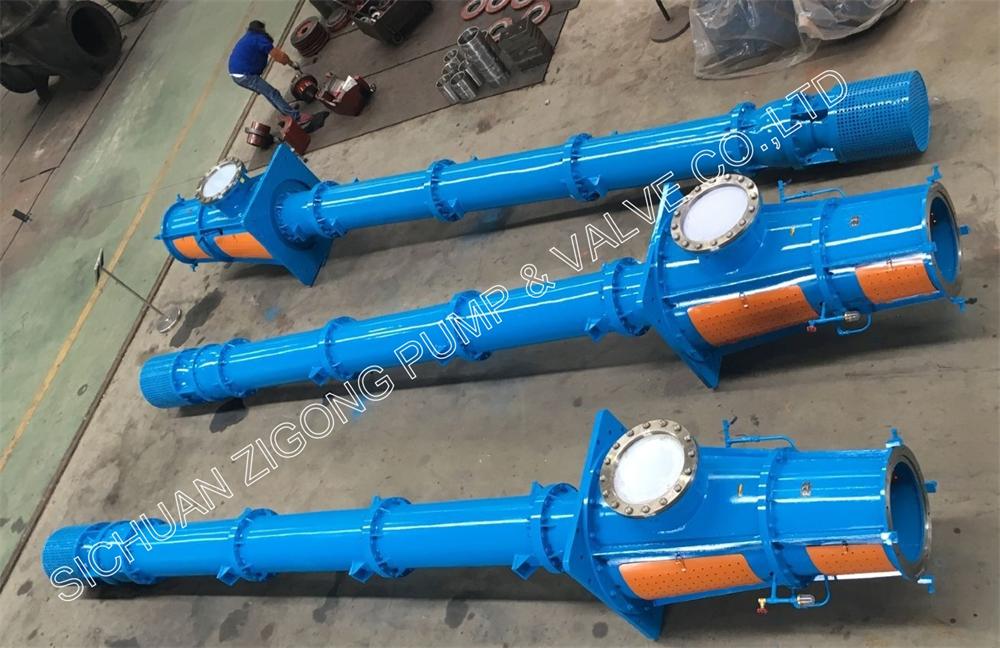
Large flow rate and low discharge head: The Axial flow pump is designed and manufactured to meet the requirements of high flow rates and low discharge head, which enable it to discharge large volume of fluid out of its pump casing in a efficient way.
● Higher pump efficiency:
1. Less fluid dynamic loss. The impeller blades of an axial flow pump are shorter, resulting in a smaller fluid rotation effect, therefore they caused less dynamic loss.
2. Optimized design. The axial flow pump is designed with full consideration of dynamic characteristics. By optimizing the shape and arrangement of the impellers and guide vanes, turbulence and impact losses in the pump casing(also known as elbow) are reduced, ensuring smooth fluid flow inside of the pump casing.
3. High efficiency energy conversion. When the axial flow pump start to work, the fluid passes through the suction bell to the impeller smoothly and uniformly. The mechanical energy of the driving unit is transferred to the impeller, which rotates the impeller and generates centrifugal force, and the centrifugal force converts the mechanical energy of the drive unit into the pressure energy and velocity energy of the liquid in a efficient way. After rectification by the guide vane, the fluid is discharged through the pump casing(also known as lbow) without any additional loss, therefore brings about the high efficiency.
4. Excellent shaft sealing and lubrication. The function of the mechanical seal of the axial flow pump effectively keeps external particles from entering the pump casing, while the lubricating oil in the bearing housing ensuring the stability and low friction of the pump shaft during operation and reducing unnecessary energy consumption.
● Wide application range: Axial flow pumps can be found working in various applications including flood control, water conservancy, environment protection and chemical industries.
● Easy maintenance:There are only a few core parts for an axial flow pump, less maintenance work of axial flow pumps is required compared to centrifugal pumps.
● Adjustability of performance: The angle of propeller blades can be adjusted according to the various flow rate requirement for some axial flow pumps, usually the hydraulic device can be used to adjust the angle of blades even during the operation of the axial flow pump.
● Customizability of structure: The installation arrangement of axial flow pumps can be fully customized based on the particular requirements from clients, including direct coupled with motor, pipe hung, driven through V-belts, driven through a gearbox... While the column length of the vertical axial flow pumps can be totally manufactured according to the clients' design.
Chlor-Alkali Industry: The chemical axial flow pumps made from Titanium alloy or super duplex stainless steel have excellent performance of corrosion resistance against chemical solutions including caustic soda, chlorine alkali and brine even if the solution temperature is up to 130 degree Celsius.
Lithium battery Industry: Nowadays, the demand of EV battery is increasing sharply, and due to the feature of large flow rate which can accelerate the carbonate crystallization of lithium, the chemical axial flow pumps are widely used as the circulation pumps for concentration of lithium-rich brine and recycling solvents.
Fertilizer Industry: Due to the high flow rate and high efficiency of axial flow pumps, they are the ideal forced circulation pumps for evaporators of ammonium nitrate and urea products, and therefore increase the profit by reducing the energy consumption in the multi-effect evaporators.
Cooling Condensation Systems: The axial flow pump act as a main circulation pump for MVR evaporators, ZLD system and multi-effect evaporators to handle the industrial effluents with high content of salt, it also can be used for circulation of big amount of cooling water in heat exchangers.
Evaporation Crystallization:As the core part of evaporators, due to the feature of low speed, the chemical axial flow pump can efficiently circulate the brine or other chemicals in the evaporation and crystallization system without damaging the crystals in the brine or pharmaceutical products.
Irrigation and flood control: Both vertical axial flow pumps and horizontal axial flow pumps are widely used for irrigation and flood control, due to their features of conveying large volume of water in short period of time.
Sewage water treatment: In the sewage treatment process, axial flow pumps are used to transport sewage from different treatment stages to the next, serving as the heart of the sewage treatment process.
Shipyard dock: Due to the feature of the large flow rate, the vertical axial flow pumps are the essential equipment for shipyards and dock to discharge the water from themselves when they start working.
Shrimp farms: The shrimp farms require frequently replacement of water, which must be done in a short period of time, while axial flow pumps are quite suitable for this requirement, and therefore are widely used for both seawater shrimp farms and fresh water shrimp farms.
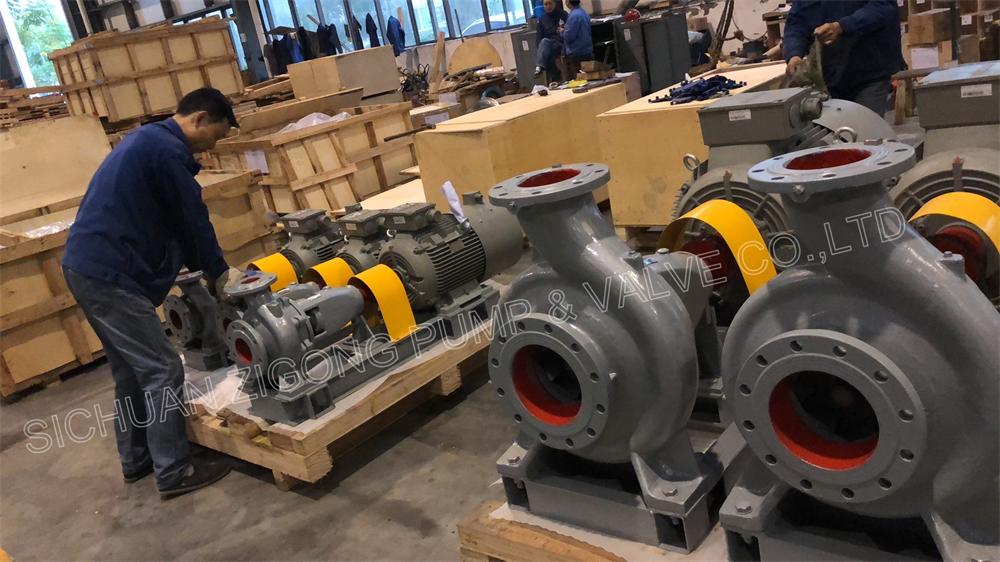
The fluid interacts with the pump impeller and pump casing after it enters the pump casing through the suction of the centrifugal pump. The impeller is composed of multiple blades and a back plate fixed on a rotating shaft. When the impeller start to rotate, due to the special shape of blades and rotational speed, the fluid begins to generate centrifugal force and gradually accelerates the fluid, increasing its kinetic energy. Kinetic energy is gradually converted into pressure energy. The pressure energy pushes the fluid to the outlet of the centrifugal pump and discharges it through the pipeline that connected to the pump outlet. Due to the centrifugal force, the center of impeller forms the negative pressure, which is the key factor that the centrifugal pump is able to continuously intake the fluid through its suction.
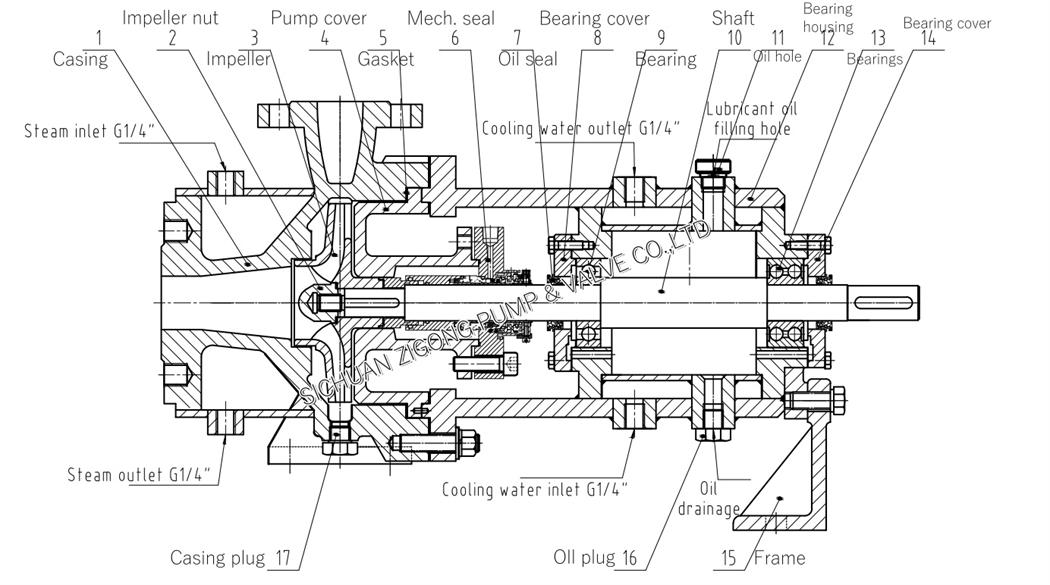
Impeller: There are several types of impeller for centrifugal pumps, including closed impeller, semi-open impeller, open impeller, recessed impeller...The closed impeller is for obtaining higher efficiency against clean fluids, while the semi-open impeller and open impeller are designed for handling fluids with certain amount of particles. The impeller is the essential working part of the centrifugal pump,which consists of multiple curved blades. It enables the fluid to gain kinetic energy under the action of centrifugal force through high-speed rotation (usually 1500-3000 rpm).
Pump casing: The casing of centrifugal pumps is usually in the shape of a volute. Its main function is to collect and guide the fluid thrown out from the impeller and convert kinetic energy into static pressure energy through pressurization of the flow channel. The cross-sectional area expansion rate of the volute can reach up to 300%, significantly reducing the flow velocity and increasing the pressure.
Pump shaft: The pump shaft connects the motor and the impeller, transmitting rotational power and cooperating with seals to prevent leakage. The sealing forms including mechanical seals, packing seals and dynamic seals.
Shaft sealing: Common types include packing seal (low cost but large leakage) and mechanical seal (allowable leakage ≤3 drops per minute). The failure of mechanical seals may present in stages as wearing, attenuation of spring force or material aging.
Couplings:The couplings consists of the pump coupling and the motor coupling, the two couplings work as a combination to connect the pump shaft and motor shaft. A certain radial deviation compensation of the couplings is allowed (for example, the elastic pin coupling allows a deviation of 0.5mm).
Suction and discharge nozzles: The suction nozzle of a centrifugal pump is usually located at the end of the pump, as the centrifugal pump is also known as end suction pump, while the discharge nozzle of centrifugal pump is located on the top the pump casing.
Bearing housing: The bearing housing of a centrifugal pump is the where the bearings and shaft are installed into, it is the lubrication system of the pump which must be oil bath lubricated or grease lubricated to reduce the friction between the pump shaft and bearings, and therefore it is an important pump part for the smooth operation.
Flush plan: A flush plan conforms to API682 for a centrifugal pump must be adopted if the shaft sealing is mechanical seal type, and the flush plan differs for various type of mechanical seals, including self-flush plans and external flush plans.
Driving unit: The driving unit of centrifugal pumps is the power source which drives the impeller to rotate, it can be an electric motor, a diesel engine or a turbine.
● Versatile Applications: Centrifugal pumps are able to handle diverse fluids, from clean water and wastewater to chemical solutions, offering exceptional adaptability across industries.
● High Efficiency: Centrifugal pumps can operate with superior energy efficiency, ensuring cost-effective fluid transfer while minimizing power consumption.
● Compact structure: The compact designed construction of centrifugal pumps simplifies manufacturing, upkeep, and repairs, lowering long-term operational expenses. With a compact design, the chemical centrifugal pumps fit seamlessly into confined installations without compromising performance.
● High-Capacity Performance: The centrifugal pumps are ideal for large-volume operations, which can rapidly move substantial liquid quantities to the required points.
● Moderate Discharge head: The centrifugal pumps are able to deliver the fluid to a higher head compared to axial flow pumps, centrifugal pumps are good at in mid-range head applications, reliably elevating liquids to required heights.
● Multistage structure availability: Multi-stage configurations enhance head range, addressing high-pressure requirements effectively.
● Operational Consistency: Centrifugal pumps maintain steady flow rates and pressure levels across varying operational demands.
● Low Noise Output: Compared to alternative pump types, centrifugal pumps are able to operate with reduced acoustic disruption.
● Extended-Distance Capability: Centrifugal pumps with higher head are perfect for long distance fluid transfer, such as municipal water distribution networks.
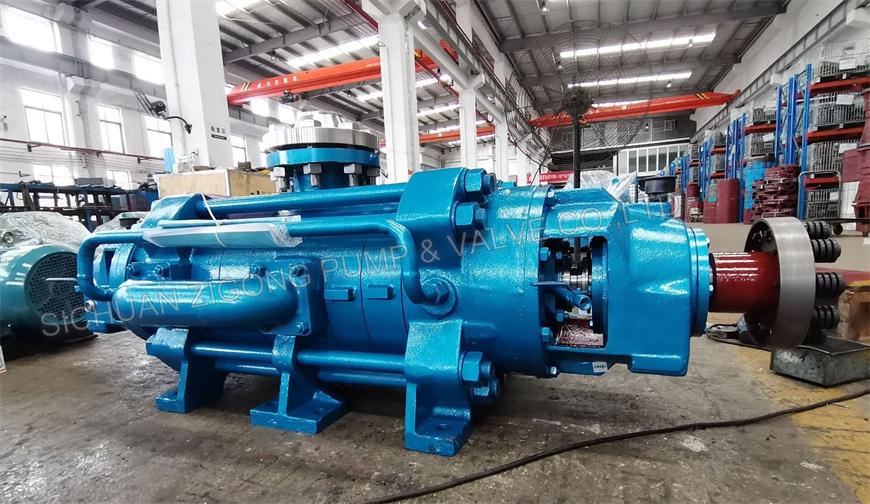
Industrial applications: Working as the process pumps, the Chemical centrifugal pumps made from various material including duplex stainless steel, Titanium, Monel, Nickel, Hastelloy...are widely used for handling the corrosive fluids in chemical plants.
Construction: Centrifugal pumps are widely used in Facilitate water supply, fire suppression, and waste management in residential and commercial structures.
Urban Infrastructure: Enable water distribution from reservoirs to residential/industrial zones in municipal systems.
Environmental Management: Transport wastewater to treatment facilities and handle processing liquids.
Agricultural field: Centrifugal pumps are the ideal pump to power irrigation networks and livestock liquid management systems.
Petrochemical Industry: Petrochemical process centrifugal pumps are widely used to assist in hydrocarbon extraction, refinement, and distribution processes.
Power Generation: Big flow centrifugal pumps are supporting cooling systems and fluid management in energy plants.
Food and beverage production: Food grade centrifugal pumps are used to manage hygienic transfer of consumables like beverages, dairy, and processed liquids.
Maritime Operations: Marine centrifugal pumps are widely used to manage dock drainage and vessel fluid handling at port facilities.
Water Treatment: Sewage centrifugal pumps are used to enable circulation and filtration in treatment facilities.
- Propels liquid parallel to the drive shaft via rotating impeller blades
- Generates linear current optimal for high-volume, low-pressure scenarios
- Mimics natural riverine flow patterns
- Utilizes radial motion to drive fluid to the pump outlet via centrifugal force
- Creates vortex-like circulation suited for moderate flow and pressure demands
- Delivers uniform dispersion from central intake
- Axial pumps peak in low-head, high-flow applications with minimal friction loss
- Centrifugal pump units achieve optimal energy conversion at medium pressure and flow ranges
Axial flow pumps demonstrate optimal performance in low-to-moderate pressure scenarios. When operating under elevated pressure conditions, their flow capacity diminishes steadily due to heightened hydraulic resistance and frictional forces. This results in a characteristic efficiency curve that maintains a gradual decline, aligning these pumps with applications demanding substantial liquid volume transfer at limited pressure requirements.
Centrifugal pumps exhibit a distinct pressure-flow relationship characterized by an initial performance surge followed by stabilization. Under low-pressure conditions, these pumps achieve maximum volumetric output, with flow rates inversely correlating to pressure elevation. Within their optimal operational thresholds, however, they maintain predictable flow-pressure proportionality, rendering them ideal for moderate hydraulic demands balancing both parameters.
Optimal Use Cases: High-volume fluid transfer under minimal pressure conditions
Performance Advantages
- Superior volumetric throughput for rapid bulk fluid movement
- Energy-optimized operation in low-pressure environments
- Streamlined hydrodynamic design minimizes turbulence losses
Operational Limitations
- Pressure ceiling restricts high-pressure system compatibility
- Progressive efficiency decline beyond specified pressure thresholds
Ideal Applications: Balanced pressure-flow systems with moderate operational demands
Functional Benefits
- Adaptive performance across variable viscosity mediums
- Stable pressure maintenance through radial acceleration mechanics
- Robust construction for extended duty cycle operations
Design Considerations
- Throughput limitations in ultra-low pressure configurations
- Precision component alignment requirements increase service complexity
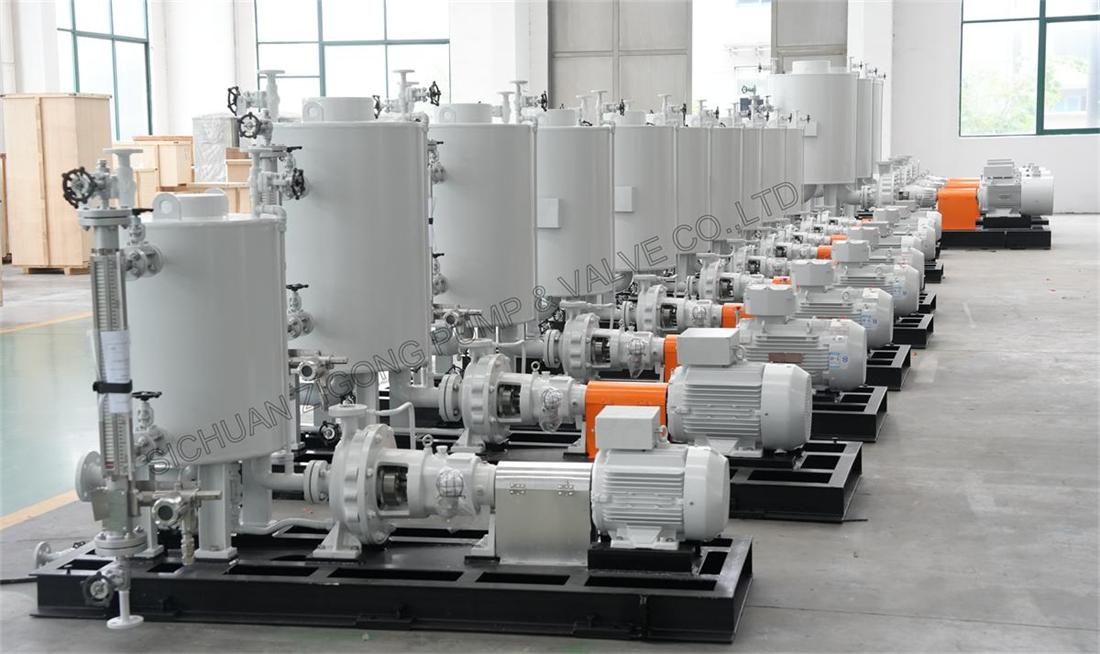
1. Operational Parameters: Quantify required flow rates, head specifications, and fluid properties of the required pumps.
2. Mechanical Understanding: Recognize operational principles of different pump features.
3. Performance Matching: Align pump type with application demands (axial flow pumps for high volume purpose, centrifugal pumps for high pressure purpose).
4. Medium Compatibility: Assess fluid viscosity, corrosion potential, temperature and particle content.
5. Energy Considerations: Evaluate efficiency curves across operational ranges to select higher efficiency pumps.
6. Space Constraints: Verify physical dimensions against installation area.
7. Maintenance Factors: Prioritize service accessibility and component durability
8. Cost Analysis: Balance initial investment against life-cycle expenses.
9. Supplier Evaluation: Partner with certified manufacturers offering technical support.
In the design process of various fluid conveying projects, selection between axial flow pumps and centrifugal pumps requires careful analysis of operational demands, as each of them have quite different advantages as well as advantages against various applications. For comprehensive pumping solutions supported by decades of engineering expertise, please contact us for customized guidance.
Contact us now: sales@zgpumpvalve.com or wa.me(Whatsapp: +8613738006567)